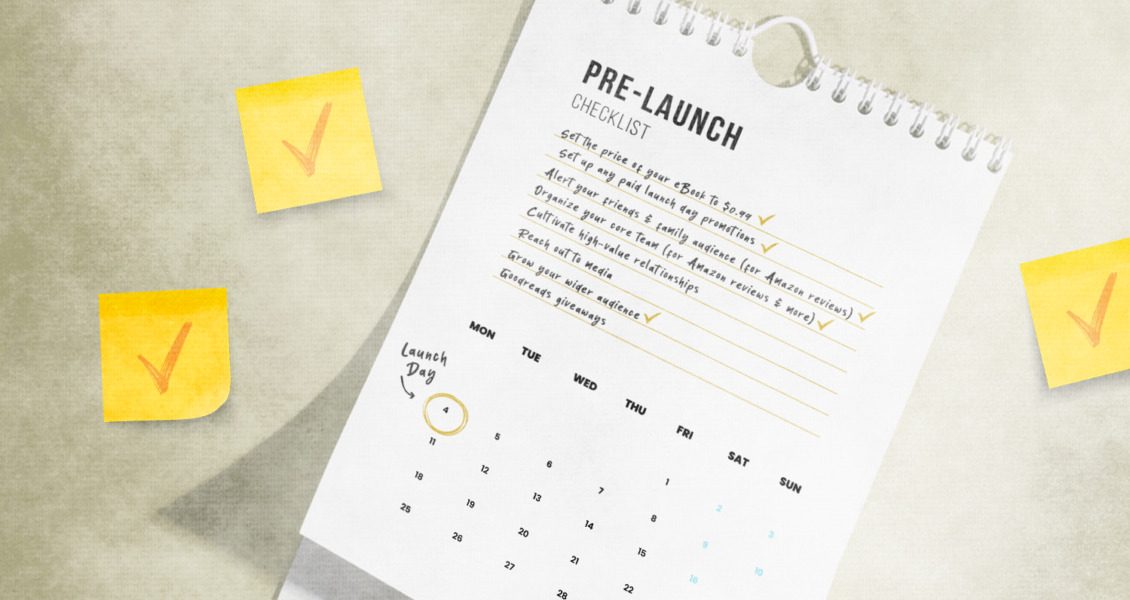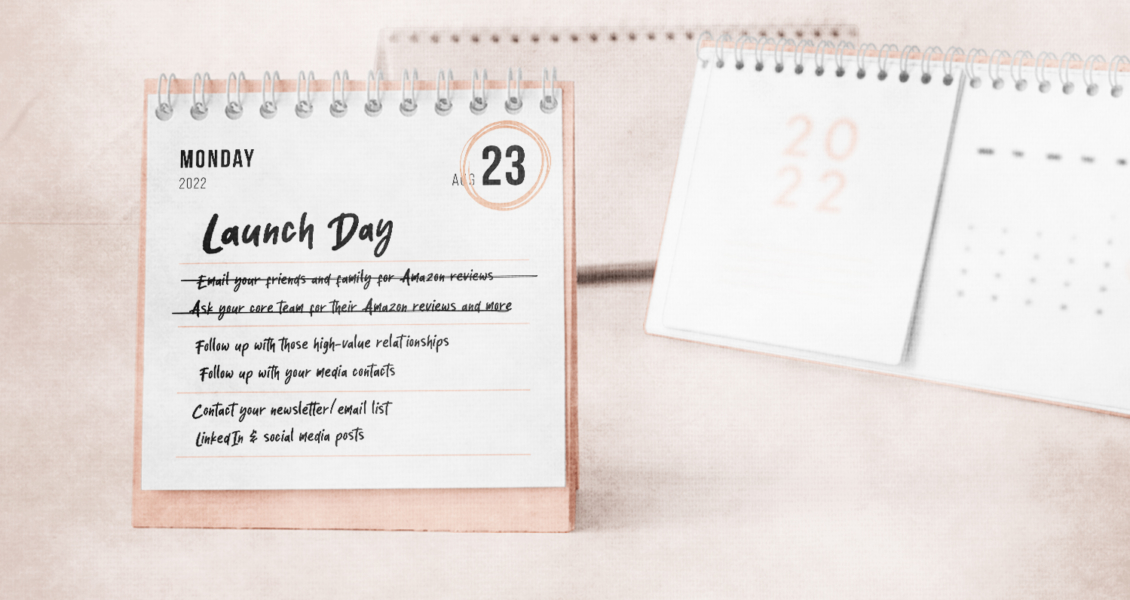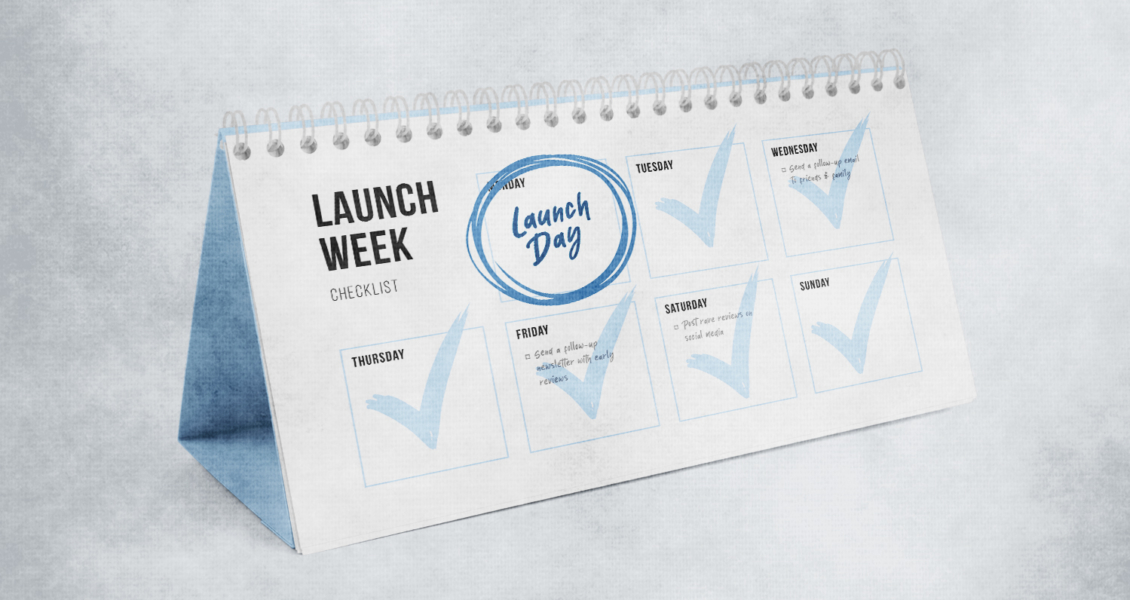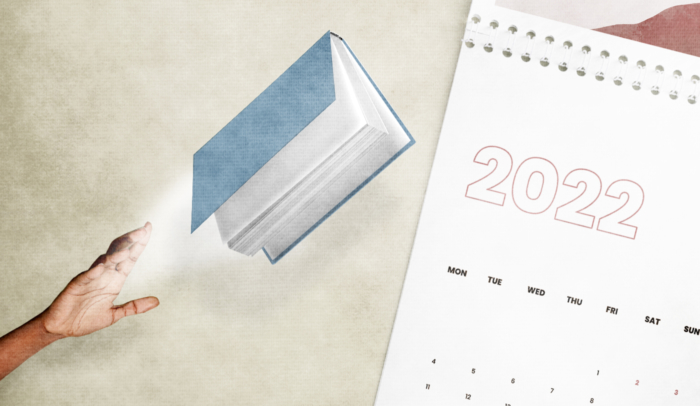For the right readers, your book will be life-changing.
No matter what year it is or what’s happening in the world or what the newest marketing craze is, your book launch has only one real goal:
Your book launch is about reaching the readers who will benefit the most from your book.
Why? Because those are the readers who will be excited about it. They’re the ones who will talk about it, review it, and share it. Those readers are the key to getting your book the attention it deserves.
Cool new marketing hacks and paid advertising have their place, but word-of-mouth advertising from your own readers is the best—and most effective—advertising you can ask for.
That’s why the most successful book launches target the readers who will get the most out of reading the book and ignore everyone else.
In fact, your entire book launch, including the months leading up to it, is about serving your book—by trying to reach a critical mass within your target audience to spark that word-of-mouth advertising.
If you do that well, the formula flips after the launch, and your book will start serving you. It will get people talking about you and calling you. They’ll understand that you’re the person they need.
That’s why the work you put into a book launch is so crucial: it sets you and your book up for success.
I’ve organized this book launch marketing plan into 3 chronological stages. I’ve also put together a checklist you can download for yourself.
How to think about your audience
Remember: your book launch is about reaching people who will share your book. This will help you grow your audience even more.
To do that, you need to give your book as much of a boost as you can during the first week of the launch. This is especially true on Amazon, where reviews and early sales have a big effect on your book’s rank and future sales potential.
With that in mind, the people you’re trying to reach during your launch fall into 3 categories:
- A list of 30-50 friends and family you can count on to review the book
- Your most avid fans/friends/clients/supporters who will go above and beyond for you and your book
- Potential readers who will buy (and, hopefully, review) your book
You may think you don’t have 30-50 friends and family who will review your book, but you do.
Think about the people you went to school with. Colleagues you’ve worked with. Clients you’ve helped.
Look through every contact in your phone. And on LinkedIn. Consider the people who interact with you most often on social media.
Think about your spouse’s network, too. Or your parents’ networks. Your grown children’s networks. Your best friends’ networks.
Don’t give up. They’re out there.
As for the final category—potential readers who will buy and hopefully review your book—think about who they are and where you can find them.
What media do they read or watch? What podcasts do they listen to? What influencers are important to them?
Start thinking about this early. These questions will inform the decisions you’ll have to make about your launch.
How to Run a Successful Book Launch

Pre-Launch Checklist
These are all the things you need to do before the day your book launches.
Be sure to give yourself enough time to get them all done. You’ll need at least 6 weeks just to do the bare minimum, and that’s cutting it close. You’ll be able to do a lot more if you start a few months in advance of your launch date.
Read through the whole list before you do anything. Some of the timing can change based on other events that might or might not happen leading up to the launch.
1. Set the price of your eBook to $0.99
For many Authors, setting a launch price of $0.99 feels counterintuitive. The book is brand new, and it feels like the book should be valued much higher. But there’s a difference between the regular list price and the launch price.
Your list price is an entirely different question that I’ve explored in detail in a separate post on book pricing.
Your launch price is about pushing book sales. A launch price of $0.99 boosts sales in 2 ways:
- Encourages sales through a low price point
- Lets you sign up for promotional newsletters
You can use a low price and promotional newsletters to boost sales during your book’s launch week.
If you’ve chosen your Amazon categories well, boosting sales during that first week can bump your book’s Amazon rank within those categories.
Why does that matter? Because Amazon’s algorithm rewards a strong launch by promoting your book and suggesting it to new people.
I can’t stress enough how important that is:
High sales on Amazon during a book’s first week will make Amazon start marketing your book for you.
A strong book launch will make Amazon:
- List your book higher in its categories … so more people see it
- List your book higher in keyword search results … so more people see it
- Include your book on its bestseller lists … so more people see it
- Email your book to potential new readers … so more people see it
See the pattern? Amazon is fantastic at selling books. The system recognizes a book that’s doing well and pushes it to new readers.
That boost can keep your book selling well long after you’ve stopped putting any effort into marketing.
And the more people who buy it, the more people there are to read it, love it, and tell other readers about it.
2. Set up any paid launch day promotions
Book promotion email lists
There are several promotional lists that will send book deals out to their email subscribers.
Set these up to begin the day of your launch, and make sure they run through at least the first week. But know that you’ll have to sign up for them well in advance of your launch date.
BookBub is by far the best, and it has one of the longest lead times. It’s a paid service, but it’s worth it.
To read more about promotional lists that are worth applying for, read my post on the research Scribe did on promotional sites for nonfiction book sales.
PRO TIP:
If you’re applying for a BookBub feature deal, keep your book at its full list price until BookBub approves the deal. Then set the price to $0.99 according to BookBub’s timing guidelines.
Amazon ads
Amazon’s sponsored ads tend to convert well. Those are the ads you see when you’re browsing through books on Amazon. The system offers you a list of sponsored books that are related to whatever you were looking for.
You might lose money on ads during launch week when your book is only $0.99, but they can really boost sales if you choose your keywords well.
After the launch week is over and your book goes back to its full list price, you should be able to get a positive ROI with at least a few of your keywords. Once you do, you can leave those ads running all the time and add to your keywords as you find new ones that work.
3. Alert your friends & family audience (for Amazon reviews)
This is where your friends-and-family list comes into play. Separate your list into the two I mentioned above:
- 30-50 friends and family you can count on to review the book
- A core list of your most avid supporters who will review your book and more
Group 1 is all about Amazon reviews. Anything else they happen to do for you is great, but the key is getting those reviews.
Along with high sales, Amazon rewards books with significant numbers of reviews. So the more reviews you can get in your first week, the better.
Ideally, you’ll be in touch with these people throughout the writing process so they can get excited with you over time. About a month before the book comes out, send them an advance copy and let them know you’ll be asking them for a review on Amazon on launch day.
Remember: never pay for Amazon reviews. It’s against Amazon’s review policies.
That said, sending an advance copy of a book does not count as payment. If you happen to have more than 50 people you can count on to review the book, feel free to send out as many advance copies as you want.
Almost anyone can review a book on Amazon, even if they didn’t buy the book, as long as their account is active enough to meet Amazon’s conditions.
4. Organize your core team (for Amazon reviews & more)
That core list of people who would go the extra mile for your book? You’ll want to go the extra mile for them, too.
These are the people you can count on to do more than leave a review on Amazon. They’ll also promote the book on social media, talk about it with their friends, recommend it to their own clients, and help you get the word out.
Who are they?
For most Authors, they’re a combination of close friends & family and clients who love your work.
Your core team should get an advance copy of your book, just like your general friends & family group. But you’ll also want to consider inviting them to a private Facebook group, giving them insider content, or finding other ways to turn them into a community and show them your appreciation.
On launch day, you’ll ask them to post their reviews and also do some extra things to spread the word, such as:
- Write LinkedIn articles
- Share social media posts
- Send emails to people they think would benefit from your book
- Etc.
5. Cultivate high-value relationships
What are high-value relationships? They include:
- Influencers and bloggers
- People who run relevant groups or organizations
- People with podcasts whose listeners fall in your target audience
- People with targeted emails lists that would be interested in your book
- Anyone else who can help you spread your reach beyond your own contact list
At a bare minimum, cultivate these relationships and send them an advance copy of your book one month before it comes out.
If you’re looking specifically for blurbs to promote your book, you’ll want to do that as early as possible.
When you ask for their help, make sure your ask is specific:
- A tweet on launch day
- A LinkedIn article
- A podcast interview
- A review on their own blog
- A blurb for your book
- Etc.
You’re going to have a lot to do on launch day, so write those follow-up emails ahead of time—reminding them of the ask and letting them know it’s time—and have those ready to go.
6. Reach out to media
Think about your core audience and ask yourself where they’re consuming their media.
Is there a segment on a local radio show that they might follow? What about blogs they might read regularly or newsletters from professional associations?
Reach out to the people who curate the content for these media, and let them know about your book. In your letter, tell them exactly why their readers, listeners, or viewers will find your book interesting.
I’ve written a whole post about getting endorsements. You can also join our free Scribe courses to learn more about making these media connections.
Again, write any follow-up emails ahead of time so they’ll be ready to send according to your launch plan schedule.
7. Grow your wider audience
For this step, it’s time to turn to your book-buying audience—people who would benefit from buying and reading your book.
There are many ways to grow this audience. Here are just a few examples:
- Provide lead magnets on your website to grow your email list
- Add people on LinkedIn
- Post shareable content on social media
- Make Facebook Live appearances
- Start an author blog or podcast
- Offer behind-the-scenes info, webinars, or other related content
But you don’t have to do any of that.
You can do all of it or none of it. Or something else entirely.
When it comes to your audience, your core team is the most critical part of your book launch plan. Everything else is extra.
If you’re on social media or LinkedIn, remember to post about your book before and on launch day.
If you have an email list, have your launch day newsletter ready to go ahead of time.
8. Goodreads giveaways
Goodreads giveaways aren’t nearly as important in building Amazon reviews as your core team or your friends & family.
They should be considered highly optional, but they can bump your reviews a bit if you put enough into them.
These giveaways are just what they sound like: giving copies of your book away on Goodreads. It’s a paid service, but at least the Kindle copies themselves are free (because Amazon owns Goodreads).
A Goodreads giveaway can build general awareness of your book. It can also (possibly) gather some extra reviews on Amazon during that critical first week.
The more copies you give away, the more people might read it and leave a review. But be aware: only a small portion of Goodreads giveaway winners actually leave reviews, and only a small portion of those also bother to post on Amazon.
So these returns diminish rapidly.
To maximize this opportunity, end the giveaway (and send the books) just a week or two before launch day to give readers time to read the book.
Why shouldn’t you do this earlier? Because Amazon will only let people leave reviews for your book on or after launch day, not before.
If readers finish your book before they’re able to leave a review on Amazon, they aren’t likely to go back and leave one later.

Launch Day Checklist
If you’ve done everything right, you’ll have a lot to do on launch day, but your emails and newsletters will be ready to go.
1. Email your friends & family list for those Amazon reviews
Send your friends and family the launch day email you prepared ahead of time. Let them know that the book is now live on Amazon. Be sure to ask them specifically to leave that review.
2. Ask your core team for their Amazon reviews & more
Ask your core team to post their own Amazon reviews as well as anything else you’ve asked them to do: social media posts, articles, blog posts, etc.
Again, these emails should be ready to go, so it’s just a matter of sending them out.
If you’ve been interacting with your core team through Facebook or some other social media, you’ll want to be especially active on launch day.
3. Follow up with those high-value relationships
Remember to follow up with your high-value relationships.
This is a category with a variety of deadlines based on who is doing what, and when.
Most of your blurbs, for example, should be in by now. Send reminders to anyone who promised to post a launch day blog post or article. Podcasts should already be scheduled.
And, this should go without saying, but be sure to say thank you. A little gratitude goes a long way.
4. Follow up with your media contacts
Everything I said about high-value relationships goes for your media contacts too. Especially the part about saying thank you.
It’s not just about being polite. Media contacts often need people for quotes and other source material. Make sure they know that you’re grateful for their help and that you’re available if they need you.
The more reporters want to contact you as an expert in your book’s topic, the better.
5. Contact your newsletter/email list
Remember: your email list is different from your friends & family list. If you don’t have a general email list, that’s fine. You don’t need one for a successful launch.
But if you do have an email list, remember to send that newsletter on launch day.
6. LinkedIn & social media posts
Again, social media is completely optional. But if you’ve built up a social media audience on any platform, including LinkedIn, remember to post about your book on launch day.

Launch Week Checklist
Throughout the rest of your book’s first week, there are a few places where it’s worth following up to make sure your launch is as successful as possible.
1. Send a follow-up email to friends & family
For anyone on your friends & family list who hasn’t left a review, remind them again in the middle of the week. Remember, the more reviews you can get during that first week, the better.
2. Send a follow-up newsletter with early reviews
If everything goes well, you’ll have a whole slew of reviews come in over the first day or two.
If you’ve built up an email list, gather the best quotes from influencers, media coverage, and Amazon. Send another newsletter a few days into launch week that includes those rave reviews.
3. Post rave reviews on social media
Post those same rave reviews on LinkedIn and any other social media where you have a following.
If you think that feels too much like bragging, it isn’t. It’s about reaching the people who will benefit from your book.
The more of those people who see your book, the more people your book can help.
What to do after launch week
Remember: launch week was all about serving your book.
After launch week, the best thing about self-publishing is that the formula flips.
Now, it’s time for your book to serve you.
If you’re looking for ways to make that happen, browse through these success stories of other self-published Authors for ideas. Or read my post on how to make money from your book.


